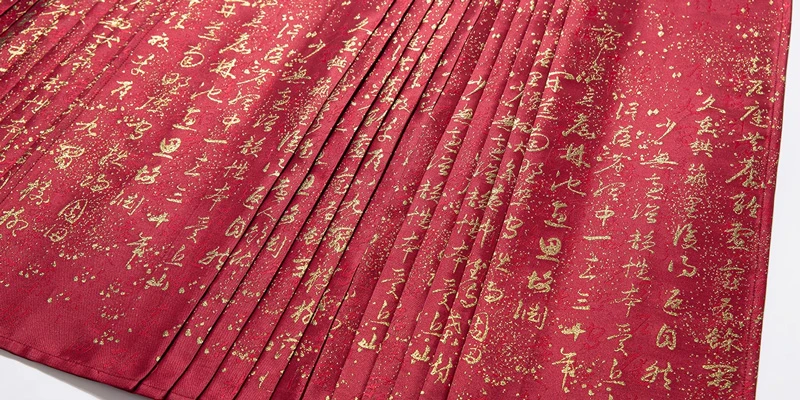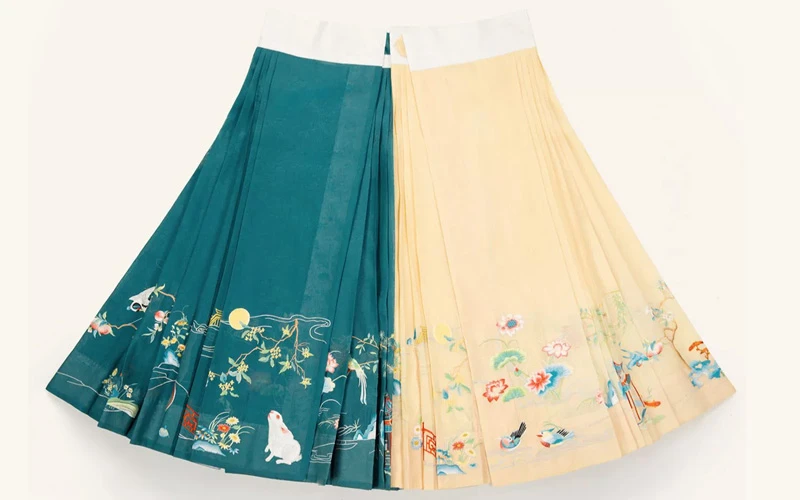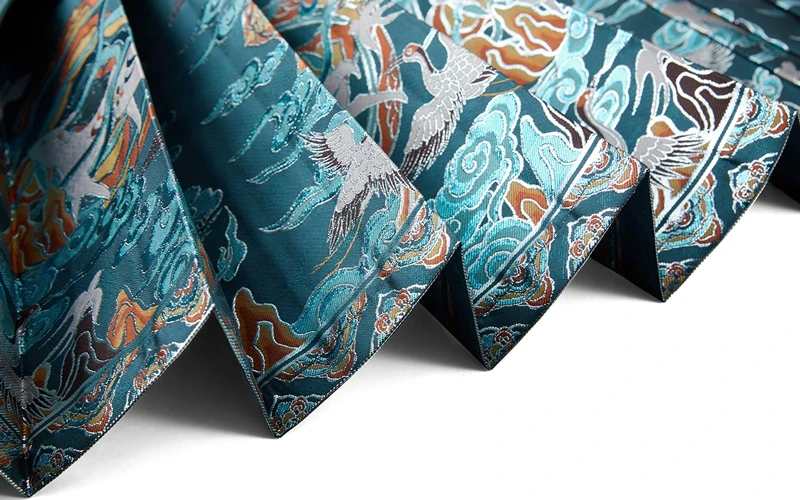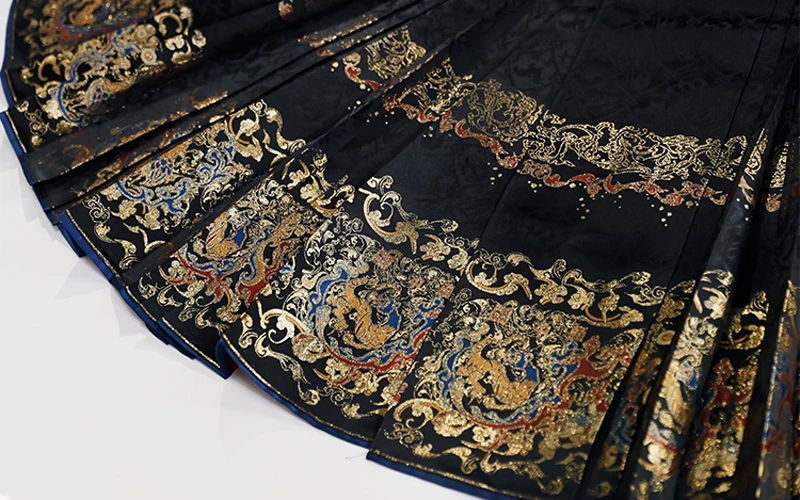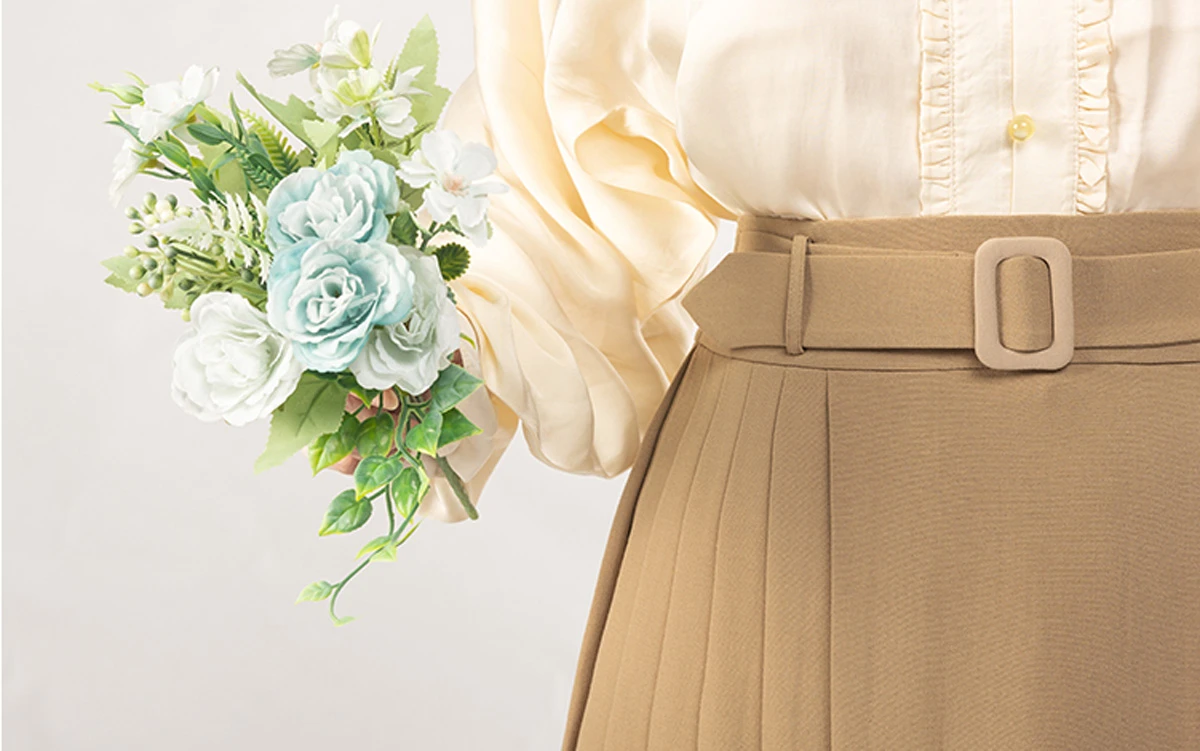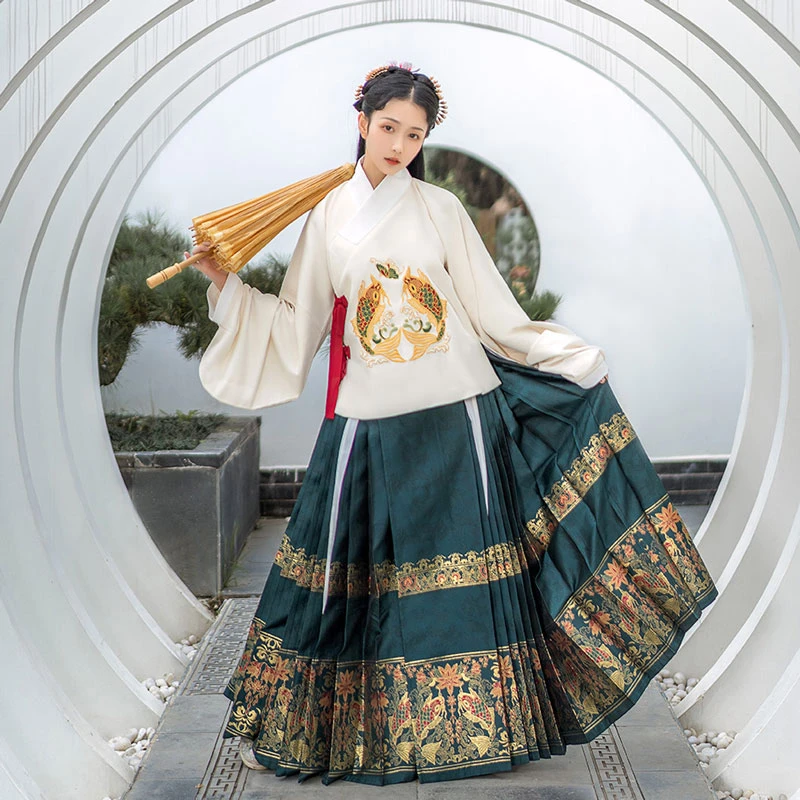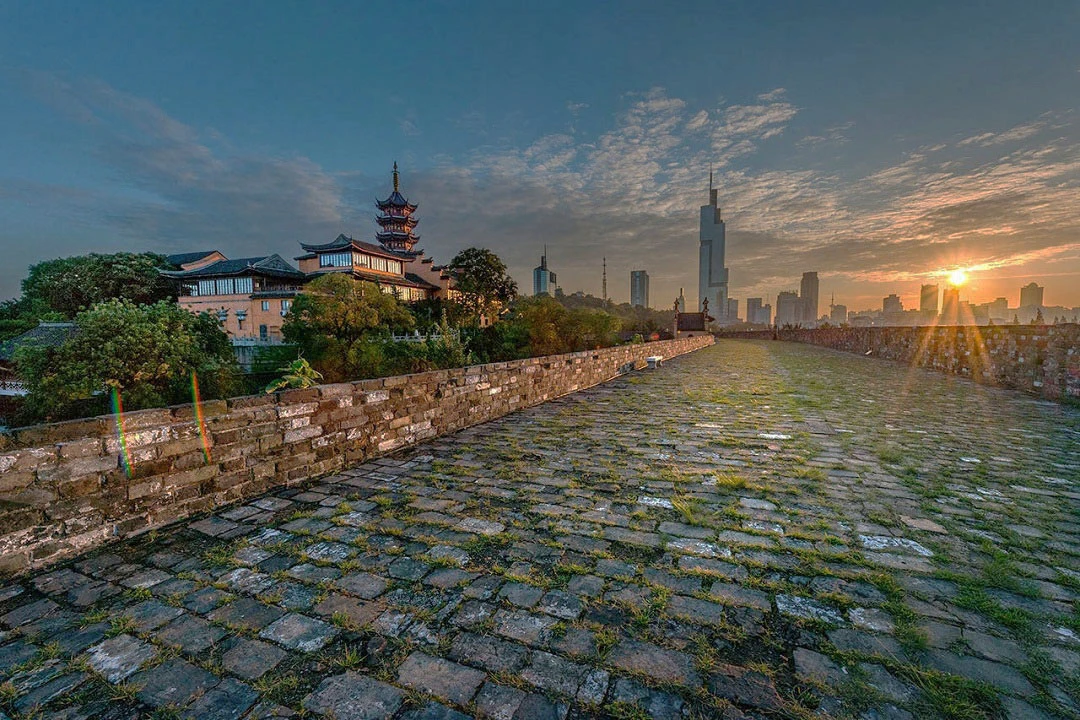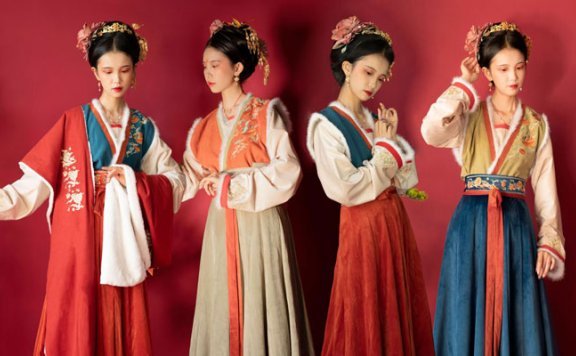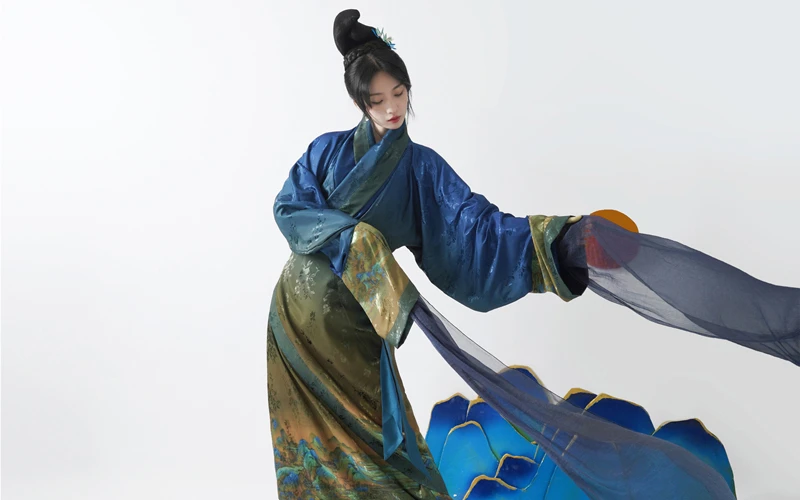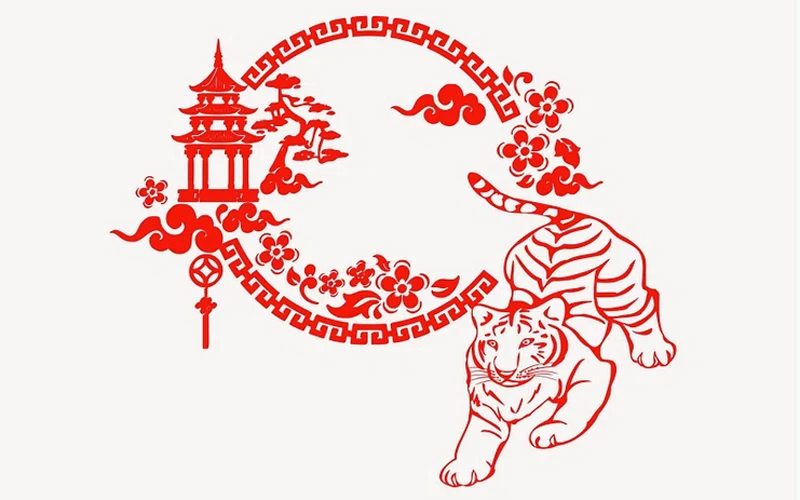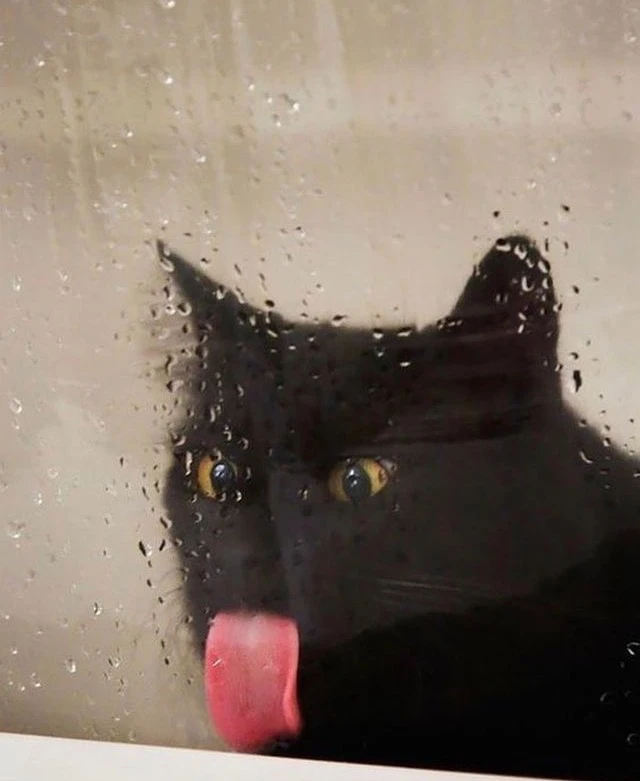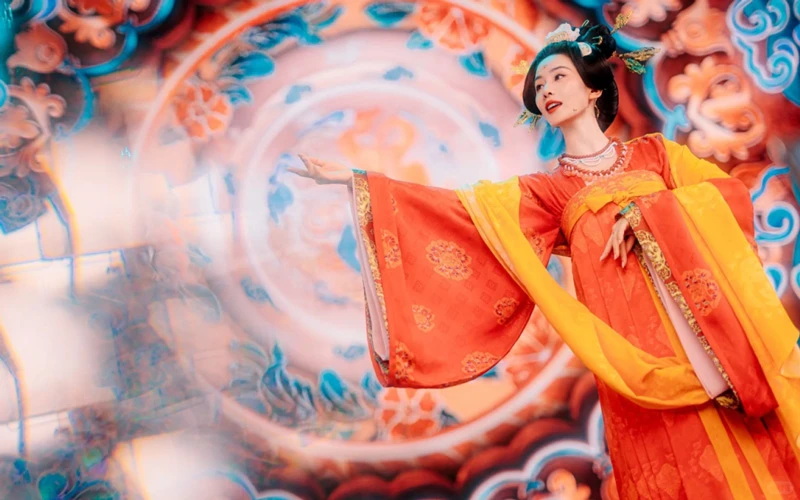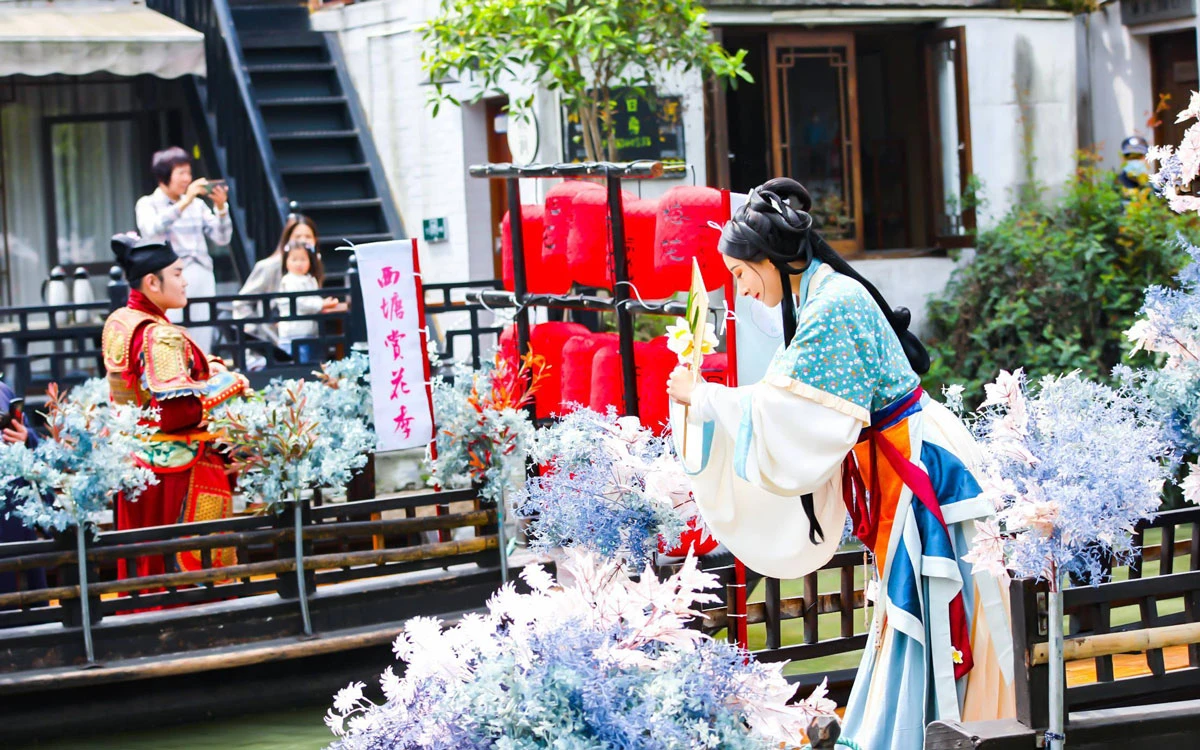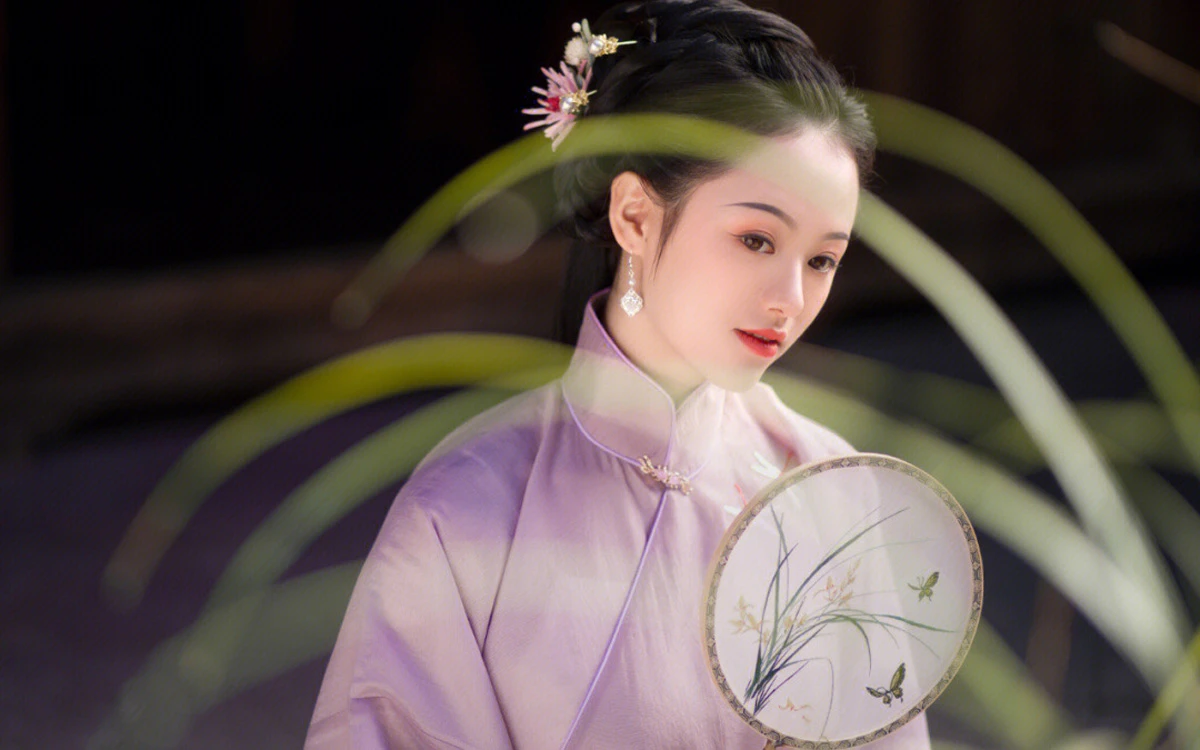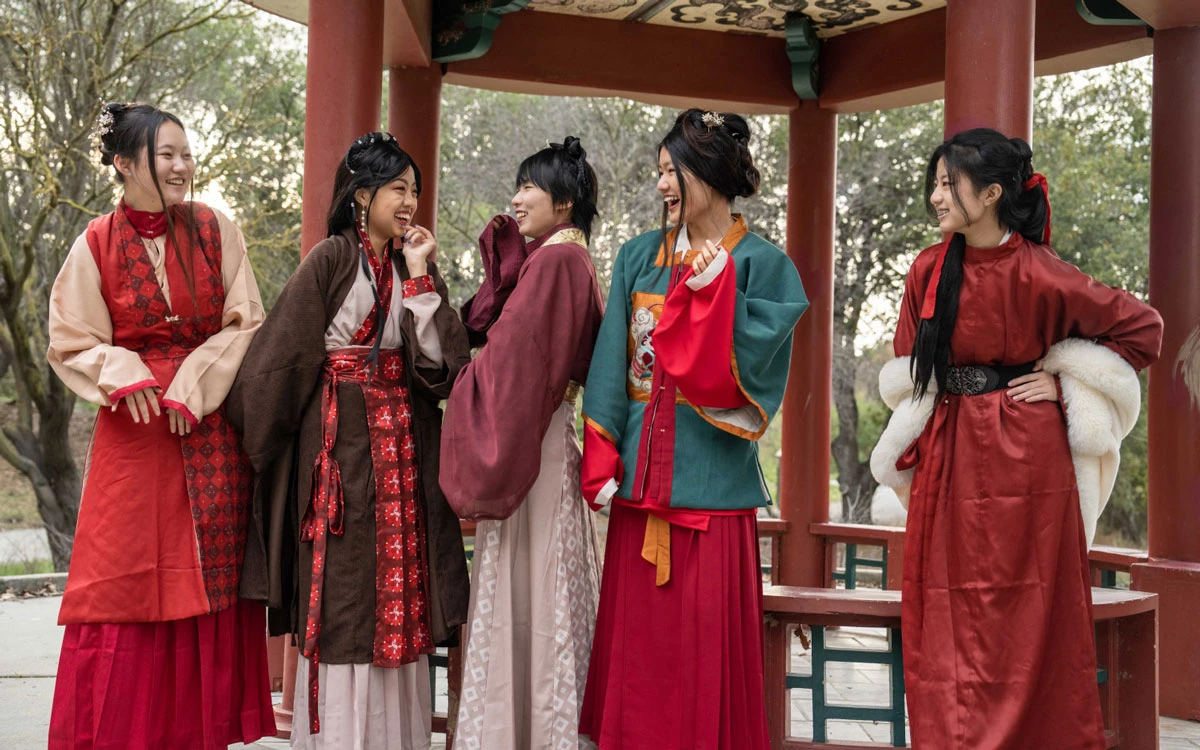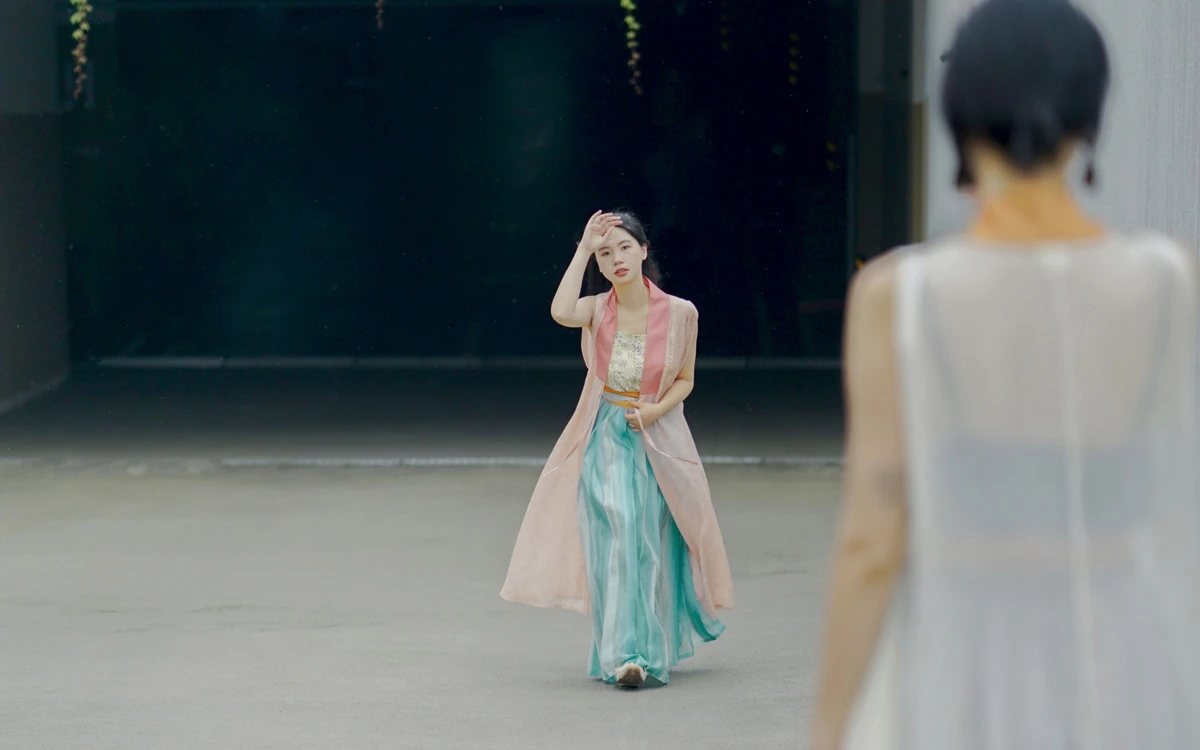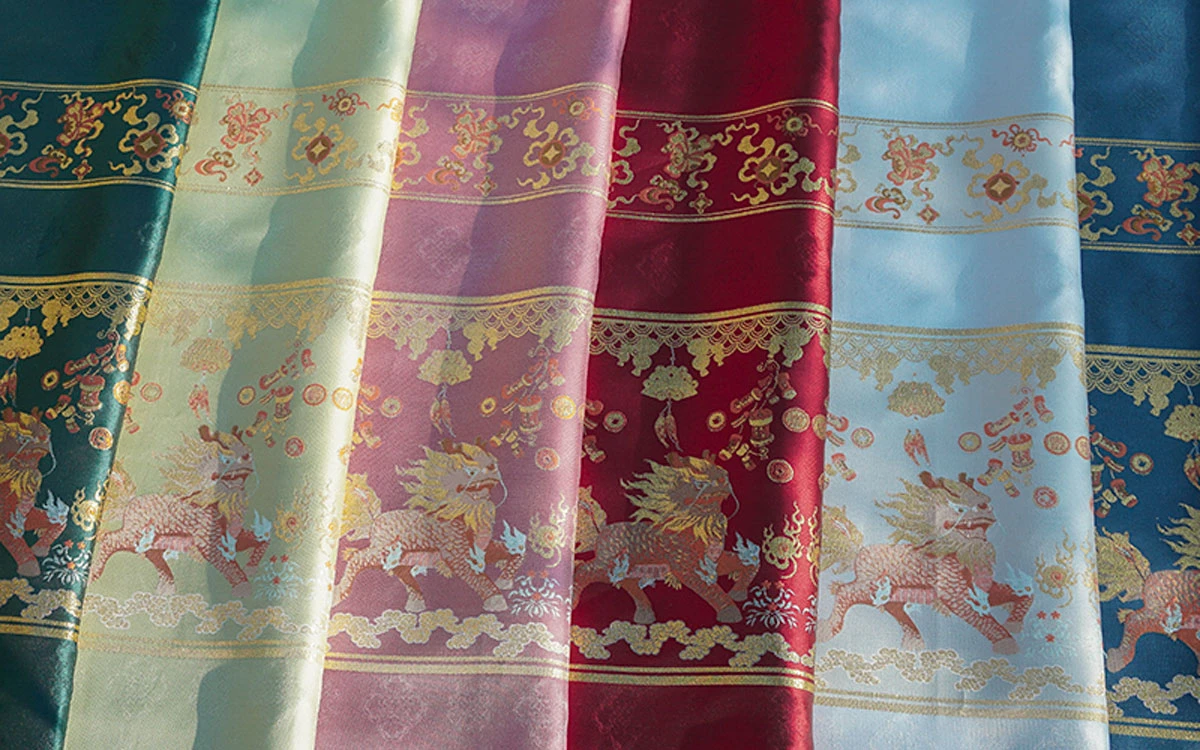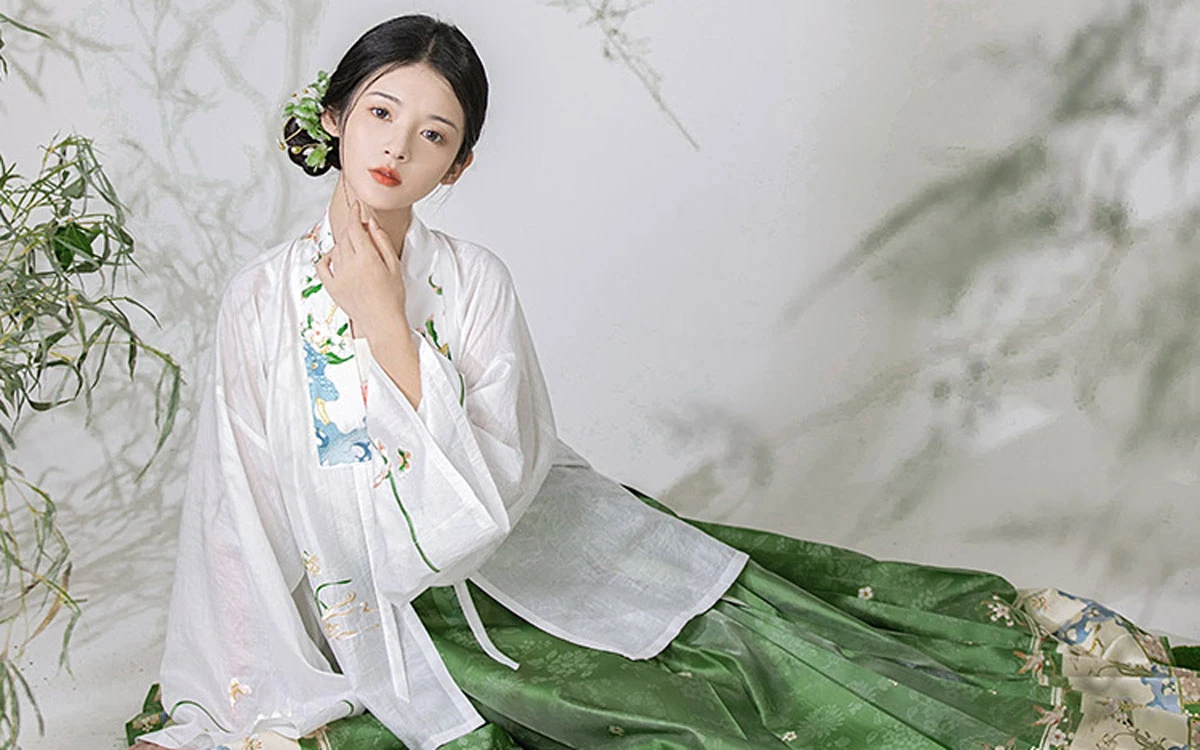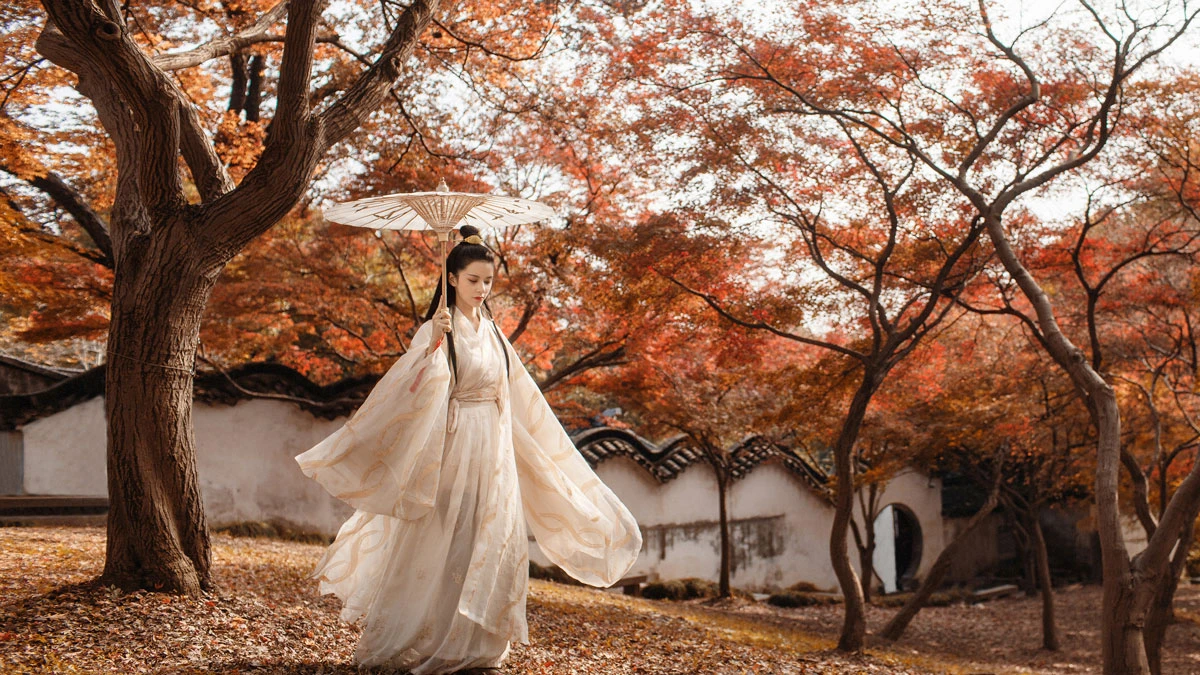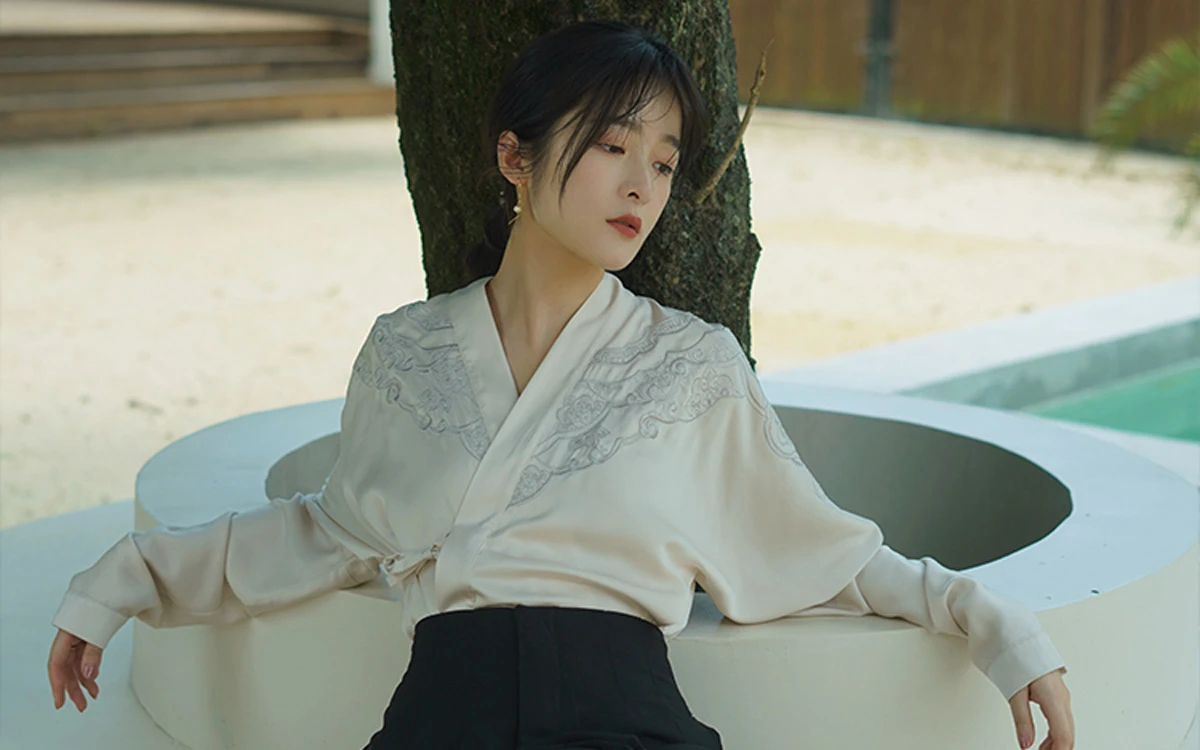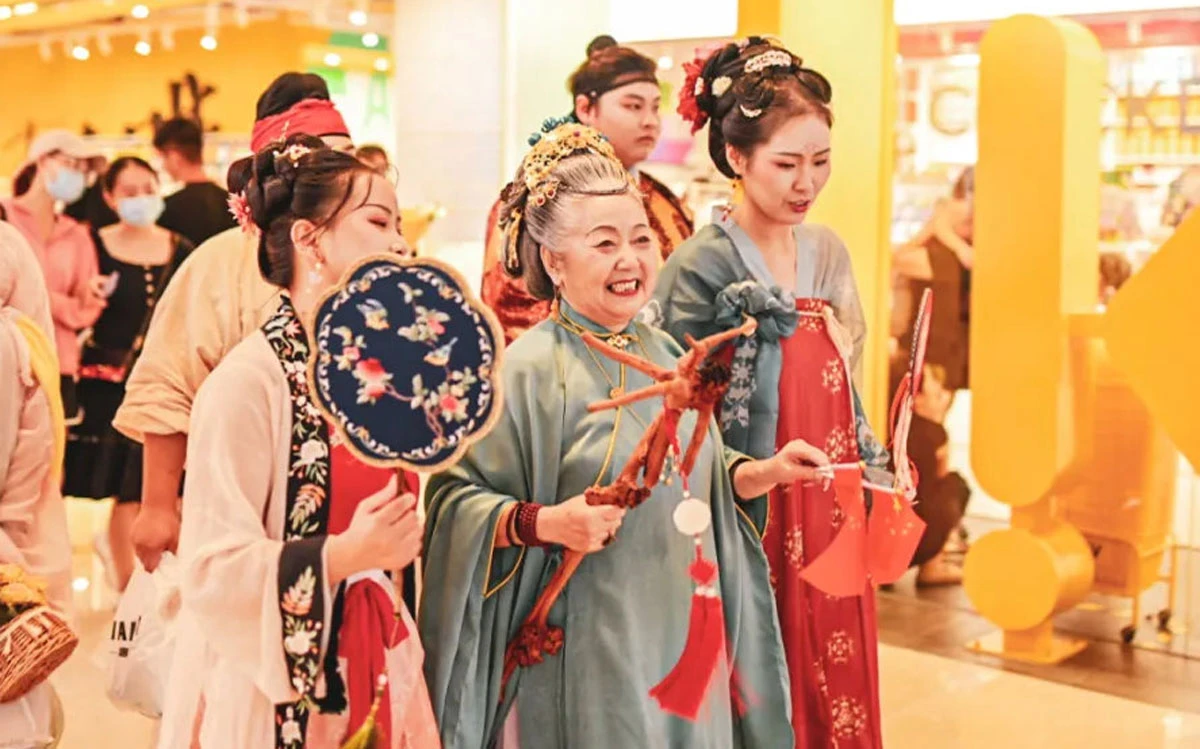Article
Search results for the keyword [Mamian]:
-
Finding the Right Mamian Skirt to Complement Your Hanfu
Nowadays, the Mamian skirt is increasingly integrated into our sight and life. Under such a trend, many people are eager to own their desired Mamian skirt. Let's follow Hanfu Shidai and take a look at the details to consider during the process of selecting and styling a Mamian skirt. 1 - Selection Stage Step 1: Size Firstly, choosing the right size that fits the body curves is crucial for the perfect outfit. Like a suit, a Mamian skirt can be chosen according to a size chart or customized. Whether you are selecting from a size chart or opting for customization, the main standards to measure are height, waist, and hips. These measurements will influence the choice of skirt length, waist length, and sweep circumference. If we choose to shop online, sellers often provide a size chart for customers to make their selection. By comparing the chart, you can choose according to your size information. If opting for customization, you can first provide the seller with your waist, hip, and height information for reference. Then, based on your needs, negotiate with the tailor to decide the width of the skirt door, the length of the skirt waist, and the skirt length. Generally,… -
Exploring the Fashion Evolution of Mamian Skirt Patterns
The Mamian skirt pattern, as a traditional cultural element, is leading a new trend in the fashion world today. Its unique design and patterns showcase the elegance and temperament of ancient Han women, while also incorporating elements of modern fashion, making it a highly regarded focus in the fashion industry. Let us explore the structure, content, and trends of the Mamian skirt pattern in the fashion world. 01 Diversified Material Innovations In modern fashion, designers have applied the Mamian skirt pattern to various materials such as silk, cotton, chiffon, and blended fabrics. The Mamian skirt exhibits diverse styles and characteristics through material innovation, combining vintage flavor with a contemporary sense of fashion. This diversified material innovation injects new vitality and fashion trends into the Mamian skirt pattern. 02 Innovative Styles and Diversification Modern designers have retained the traditional Mamian skirt's basic structure and introduced many innovations. For example, the Mamian skirt can be paired with other garments such as t-shirts, shirts, or jackets to create a unique fashion style. Additionally, the Mamian skirt pattern can be incorporated into accessories such as handbags, shoes, or jewelry, adding unique highlights to the overall look. 03 Perfect Fusion of Tradition and… -
Finding the Perfect Hanfu Mamian Qun: A Guide to Choosing the Right Style for You
Recently, the popularity of Mamian Qun (horse face skirt) shows no sign of waning. On November 23rd, at the opening night of VOGUE Forces of Fashion, Tong Yao's appearance in a Mamian Qun caught the attention of netizens. Mamian Qun are gradually integrating into our vision and lives. In light of this trend, I believe many people are eagerly longing to own a horse-face skirt, so let us follow the Hanfu Shidai explore the details to consider when selecting and styling a horse face skirt. I. Selection Stage Step 1: Size First and foremost, a suitable size that fits and contours to the body curves is crucial for a perfect outfit. Similar to a suit, one can choose to follow the size chart or opt for made-to-measure when selecting a Mamian Qun. Whether based on the size chart or personalized tailoring, the primary measurements to consider are height, waist circumference, and hip circumference. These factors will influence the choice of skirt length, waist length, and hem circumference. If we choose to purchase online, merchants often provide a size chart for customers to make their selection. By referring to the table, one can choose accordingly based on their own size… -
How to Seamlessly Integrate the Mamian Skirt into Your Daily Outfits
Among the numerous garments of Hanfu, the most popular one is probably the Mamian skirt. As a clothing item full of ethnic style, the skirt is characterized by vibrant colors and unique patterns. Wearing it seems like traveling through time and experiencing the charm of traditional culture. In fact, the Mamian skirt is not a completely new design, its history can be traced back to a hundred years ago. Also known as Mamian pleated skirt, it was one of the main skirt styles for ancient Chinese women. It consists of four skirt doors, both front and back, overlapping in pairs. The outer skirt door is adorned with decorations, while the inner skirt door has fewer or no decorations. The Ma Mian Qun is pleated on the side, and the skirt waist is often made of white fabric, symbolizing a lifelong union. It is fastened with a rope or button. The design of the Mamian skirt highlights symmetry and streamlined shapes, emphasizing the curves of women and creating an elegant and dignified image for the wearer. The charm of the Mamian skirt has actually transcended national borders. At the banquet where Princess Diana was announced as the future royal bride in… -
8 Modern Mamian Qun That Will Wow You
The Mamian Qun, or the horse-face skirt, is a traditional Chinese dress that has a long history and a rich culture, and its elegant and graceful style. However, in recent years, the Mamian Qun has undergone some changes and innovations, thanks to the creative efforts of some designers who have given it a modern twist. In this article, we will introduce you to eight modern Mamian Qun that are stunning and fashionable. These dresses combine the essence of tradition with the elements of innovation, creating a new trend of Chinese dress that you don’t want to miss. Style 1 It features a simple design with a piece of leather buckle, which not only adds to the aesthetic appeal but also helps to keep the dress in place. The fabric used in this Mamian Qun is not prone to wrinkles, making it an ideal choice for those who prefer a neat and polished look. The pleat style is stable, ensuring that it retains its shape even after multiple washes. Furthermore, this Mamian Qun particularly striking in the way it reflects light, displaying a golden sheen that catches the eye and adds a touch of luxury. Style 2 This Mamian… -
The Mamianqun: History, Construction, Features
So the Mamianqun, or 馬面裙, or horse-faced skirt, has been blowing up lately especially because of the Dior controversy—here's an in-depth dive into the history, construction, and features of the famous horse-face skirt. A BRIEF HISTORY OF THE MAMIANQUN The mamianqun or horse-faced skirt is a skirt that first originated somewhere close to the Song dynasty worn by high-class courtesans (who were like celebrities and fashion icons tbh) in the form of colorful pleated silk. It’s named this way because of its resemblance to the mamian fortress, which has stairs on either side (like the pleats) and a door in the front and back (like the skirt doors). The ‘doors’ sides of the fortress were known as the *horse faces* or mamian/馬面 because these were the faces of the fortress where the horses would pass through. It became extremely popular in the following Ming dynasty and stayed popular through the Qing dynasty through Manchurian rule—it’s been around for a long, long time! Mamianqun are more convenient for movement and offer a regal, classy aesthetic as well as a very recognizable and unique silhouette. Even Princess Diana wore one once! BASIC CONSTRUCTION OF A MAMIANQUN The Skirt Doors From the… -
Embracing Oriental Aesthetics: Chinese and American Youths Explore Nanjing
On June 25th, a unique cultural exchange took place as over 40 Chinese and American high school students from the Ricci Young Scholars Program (光启青年学者项目) embarked on an immersive journey through the historic city of Nanjing. This initiative aims to foster deep cultural understanding between youths from both nations, with participants this year focusing on the classical gardens of China. The day began at the renowned Southeast University, a prestigious institution with a rich architectural heritage. Professors Wang Xiaoqian and Gu Kai delivered insightful lectures titled "I.M. Pei and His Suzhou Museum" and "Understanding Chinese Classical Gardens: Beginning with Dianchuny (殿春簃) ," respectively. Through these lectures, the students gained a unique perspective on Chinese architecture and its intricate relationship with nature and history. The morning session concluded with a serene walk through the rain-kissed campus, allowing the students to absorb the historic and contemporary essence of the university. Exploring Nanjing's Majestic City Walls In the afternoon, the group visited the Nanjing City Wall Museum. Here, they engaged with the history and cultural significance of the ancient city walls through a variety of exhibits, including artifacts, digital sand tables, and interactive displays. The highlight of the tour was ascending the iconic… -
2024 Hanfu Free Giveaways & How to Get Points
Hi everyone, welcome to newhanfu.com, the Newhanfu Community. “To help more people to learn Hanfu costume, Chinese traditional culture and feel the charm of China!” – this is our philosophy, which we have been insisting on many years. And we are so glad that we are still here with all of you. In order to give back to all our readers for their long-term support, we have prepared a variety of fascinating hanfu costume gifts for those who love and give publicity to Hanfu. Starting from 2021, we have officially launched the Hanfu Free Giveaways. We are looking forward to your participation and get your first set of hanfu costume. By 2024, we've given away more than 1,300+ free hanfu for our members (they come from all over the world, and including many social medias, like Facebook, Instagram, Reddit, Tiktok, etc. Thank you all for the love and always support) Hanfu Free Giveaways Points for Discount Start earning points and unlock exciting discounts on our exquisite hanfu collection. Every 100 points earned equals $1 in discounts on future purchases. For example, if you have accumulated 500 points, you can enjoy a $5 discount on your next order in Newhanfu Store. … -
From Dynasties to Daily Wear: The Resurgence of Hanfu Fashion
Mamian skirt, Qixiong dress, and the hundred-pleat skirt; wearing traditional Hanfu has become a new trend in public attire in recent years, whether it be for sightseeing, wedding ceremonies, shopping, friend gatherings, and various other occasions. The "Hanfu craze" continues to rise, blending tradition with modernity, activating cultural resources, igniting the consumer market, and driving industrial development. In recent years, Hanfu has gradually gained popularity among the younger generation, with their youthful expression and fashionable presentation bringing Chinese traditional culture into daily life in a tangible and palpable form. The long-standing Chinese traditional clothing culture embodies a blend of Chinese aesthetic interests, reflecting not only a consumer choice but also the Chinese people's love for outstanding traditional culture. Demand exceeds supply During the Spring Festival and Lantern Festival of the Year of the Dragon, the activity of "wearing Chinese costumes for free to visit the Confucian Temples" in Qufu City, Jining, Shandong, has been well received. Wang Chunling, a visitor from Liaoning, traveled a long distance with friends to play here, attracted by the lively atmosphere of night tours in the ancient city of Qufu and folk performances, and dressed in Hanfu to join the parade. This year, garments… -
Animal Symbolism In Chinese Culture
Have you ever wondered about the animal motifs on your hanfu and what they stand for? Why are there so many dragons in traditional Chinese art? And what’s up with the monkey statues everywhere? Let's delve into the symbolism of animal motifs. It will only take about 5 minutes of your time, and hopefully, you'll learn something new or revise what you already know! Each hanfu garment is unique. It has various styles and designs, that reflects different historical periods and regional influences. Although the differences are significant, many of them include similar animal embroidery and motifs. Animals that have been deeply intertwined with Chinese culture from its earliest days. Animals in Chinese culture are thought to be symbolic representations of various aspects of life. Understanding the symbolic meaning of an animal will lead to grasping the hidden message of the art. It is not only an important decorative element but also adds meaning, symbolism, and cultural significance to the art, particularly in the context of Hanfu garments. Most commonly used animal motifs are: Birds: Birds are often associated with the sun and allegorical folk-tales. Each bird carries its own unique symbolism, though most are connected to happiness and… -
2024 Spring Festival Gala Highlight: Nian Jin - Traditional Hanfu and Ornate Designs
The program "Nian Jin" at the 2024 CCTV Spring Festival Gala showcased the beauty of traditional Hanfu from various dynasties to billions of viewers. Among them, the exquisite patterns connected the vision of a prosperous new year and allowed more people to understand the essence of traditional Hanfu, which is supported by classical patterns and traditional fabrics. From the grandeur of the Warring States period to the elegance of the Ming Dynasty, this stage performance passed down the beauty of China's thousands of years. Liu Tao, Liu Shishi, Li Qin, and Guan Xiaotong led the singing of "Nian Jin", and they represented the splendor of the Han, Tang, Song, and Ming dynasties, HANTIME will share the highlights in detail with us. Liu Tao's outfit consists of a Zhiju robe and a Gui Yi, with yellow as the main color, representing a solemn and grand emotional meaning. The pattern combines the patterns of the Chinese flowering crabapple and clouds, with a cape made of swallowtail gauze. The hem of the robe is made of Changle Mingguang brocade, a Han dynasty brocade discovered in Loulan, Xinjiang. The pattern mainly features animal motifs, with the words "Changle Mingguang" symbolizing auspiciousness, intricately woven with… -
The Popularity of Hanfu Culture: When Traditional Hanfu Dress Comes to Contemporary Life
An increasing number of young people are beginning to experiment with wearing hanfu, these clothing styles, which were widely used in different historical dynasties in ancient China, are now being reintegrated into contemporary life and have become an important part of youth culture. The Origin of Hanfu Culture: From Niche to Popular Typically, the origin of the modern Hanfu culture is traced back to 2003. On November 22nd of that year, a power worker named Wang Letian from Zhengzhou, Henan, walked into a downtown commercial street wearing hanfu. This event was reported by Singapore's Lianhe Zaobao, making Wang Letian the first modern Chinese person wearing hanfu to appear in public. Wang Letian was introduced to hanfu culture through forums Han Wang, and around 2003, the first hanfu enthusiasts gathered around Han Wang and other online hanfu forums, gradually forming the Hanfu circle. At the same time, some offline Hanfu culture communities began to be established. Around 2011, the subculture of adolescent internet culture rapidly developed. With the successive rise of the Lolita and the JK uniform fashion subculture, as well as the development of the cosplay community, hanfu has found its place among various clothing subcultures and has gained… -
The Allure of Hanfu: An Introduction to the Traditional Dress of China
The ancient simplicity of Qin, the elegance of Han, the splendor of Tang, the gracefulness of Song, and the dignity of Ming, every pattern and design of Han clothing is engraved with the mark of China's history. With the help of professional research, this article will share some basic knowledge of Hanfu clothing, inviting everyone to appreciate the stunning attire of Chinese ancestors. 01 Hanfu Clothing: A Comprehensive Dressing System Hanfu clothing has undergone thousands of years of evolution. It originated as an important manifestation of social ranking, etiquette, and lifestyle, while also reflecting the characteristics of different times through displaying the state of textile technology, aesthetic consciousness, and daily customs. After thousands of years of cultural accumulation, Hanfu clothing has become an important cultural symbol. It is not entirely accurate to call Hanfu the traditional attire of the Han people. Based on today's concept, Hanfu clothing should be considered the traditional attire of the Chinese nation as a whole. The Han ethnicity is inclusive, throughout the changing dynasties, Han clothing continuously absorbed foreign styles and underwent multiple periods of integration among various ethnic groups to develop rich styles and unique aesthetics. Therefore, Hanfu clothing is not merely the… -
2023 January Model Call Outing
Hey everyone! College applications have been kicking my ass for the past few months so I've been pretty silent for a while, but I'm finally done—which means more hanfu content for you all to see! For those of you who don’t know me, I’m redsugar, or Tangtang (or a bajillion other variants of red and sugar in multiple languages that people have given to me as nicknames)! I’m a gender fluid Taiwanese-American hanfu designer based in the US. I’ve been part of the Newhanfu community for a couple years now and written extensively about my historical research and designs. Today I’m going to give you all a little summary of the designs modeled in our January 2023 model call outing! This includes five out of my eight 2023 Lunar New Year collection, photographed at the Chinese Cultural Garden in San Jose. Special thanks to all the participants for modeling these samples, and hope you guys all had plenty of fun! Let’s get to it then~ 機杼/JIZHU (modeled by 采蘑菇的小姑娘背着一只大狂猪) First up is Jizhu! This is a late Ming Dynasty four-piece set consisting of a 百迭裙/百迭裙/bai3 die2 qun2/hundred-layered skirt, a 立領衫/立领衫/li4 ling3 shan1/standing collar top, a waist tie, and a 比甲/比甲/bi3… -
2022 Chinese Modern Hanfu Industry Development Report
Summary Modern Hanfu, also known as New style Hanfu, originates from the traditional classical dress style of the Han ethnic group and retains its typical formal characteristics, but innovates by combining it with the diverse wearing situations and fashion aesthetics of the current public. The core features of modern hanfu are: innovation, openness, and contextual diversity. While retaining the basic forms and aesthetics of ancient hanfu, modern hanfu has gained more and more popular among consumers in recent years by innovating its design to fit modern people's dressing habits and aesthetics, making it an everyday look. With the return of traditional Chinese culture to the mainstream, there are more and more hanfu with new styles. From both the cultural and productive point of view, the future of the new style hanfu industry is very promising. The basic situation of the modern Hanfu industry Modernization and daily use will drive the industry further The market size of the modern hanfu industry in 2021 is 1.4 billion dollars, up 6.4% year-on-year, slowing down relative to the past five years. This is partly because of the decline in the ability and willingness of consumers to purchase due to factors such as the… -
The Fabrics of Hanfu: Fibers and Weaves
Hey everyone, long time no see! It's been a while and I promise I'm still working on the Song Dynasty sections of Hanfu Unearthed—in the meantime, enjoy this not-so-short cheat sheet to all of the most commonly used fibers and weaves in hanfu, whether historically or in the industry today. Fibers Fibers are the material from which threads are spun to be made into fabric. These include synthetic fibers made in labs or factories by humans, as well as animal fibers that are grown as fur or silk by animals, or plant-based fibers that we harvest from various fibrous plants. Tencel Rising in popularity, especially last summer, tencel is a kind of semi-synthetic fiber made from cellulose, also called lyocell, originally made to imitate silk. Made by dissolving cellulose into pulp and using dry jet-et spinning to reconstitute the fibers, it’s a clean process that creates a kind of synthetic fiber using natural materials: easier to dye than cotton, more breathable than polyester, moisture-wicking, and softer than linen. The one downside of tencel is that it’s easily wrinkled, but its smooth draping quality and breathability make it a first choice for hanfu manufacturers today. Other rayons are also used, but… -
The Prototype and Development of Ming Dynasty Costume
In the first year of Hongwu in the Ming Dynasty. In order to eliminate the influence of the clothing left by the Yuan Dynasty, Zhu Yuanzhang issued an edict to the whole country, requiring the removal of Hu clothing. However, it was not the emperor who could determine the style of clothing, but the general public. Zhu Yuanzhang's edict on the restoration of the clothes and the crowns did not completely return people's dress to the Tang Dynasty tradition. Even many elements of Mongolian clothing of the Yuan Dynasty were retained because they were convenient to wear on a daily basis, resulting in the formation of Ming clothing of various shapes and features. Ming Style Hanfu vs. Song Style Hanfu For the general Hanfu lover, the difference between Ming Hanfu and Song Hanfu is probably the hardest to tell. Although it is often possible to make some guesses by feeling after wearing it, it is not really easy to pick out a single piece to see. Although there was no mention in Zhu Yuanzhang's edict of restoring clothing to the style of the Song Dynasty, but the Tang Dynasty was a distant time for the people of the Ming Dynasty.… -
Autumn Chinese Clothing Hanfu Style
Entering autumn, in addition to adapting to the weather, we also should change the style of clothes we wear. Temperatures in autumn are around 60% cold and 40% hot, because the sun doesn't last long and the weather tends to seem dark. It often rains but not heavily, when in early autumn there is a lot of fog that appears in the morning. So, warm clothes are more suitable to wear during this season. Now, the spread of hanfu is getting more and more widespread, and everyone can definitely see many people wearing hanfu in everyday life. Be it male or female, young or old, there are many people who wear Hanfu. So, what kind of hanfu should you wear in autumn? It's early fall, and the weather is a little cooler than summer, but not too cold. Therefore, hanfu worn in summer can still be worn today. For example, qixiong ruqun. In addition, Song dynasty hanfu, such as xuanqun, beizi, baidiequn, and others are also very suitable to be worn in autumn. When autumn is a little deeper, everyone can wear thicker hanfu. For example, the Ming dynasty hanfu which is very suitable to be worn in autumn. Of… -
3 Hanfu Items to Match Your Autumn Fashion
The beauty of autumn is that you can apply different dressing rules even though the seasonal temperature changes. Blending hanfu and fashion elements together to explode with an unforgettable sense of tradition and fashion. In this article, Hanfu Times recommends three types of hanfu items and the best dressing principles for fall to find your own fall hanfu street fashion. Round Neck Shirt/Robe The round neck shirt/robe is the most suitable hanfu item for all skin types and body types. The collar can be decorated with nice buttons and can be folded into different lapel styles, which can be worn as a top or as a windbreaker jacket depending on the thickness of the material. The cuffs can be added or modified with cufflinks, turning them into arrow sleeves or bubble sleeves, suitable for a mix of different personalities. The lower skirt can be mixed with a Poqun, or a Mamianqun. If it is a solid color, the waist and then add a medium width belt, can cover the original skirt waist, but also to trim the body shape. The bottom can also be mixed with fashion pants, fashion chinos, lantern pants, or wide-legged pants. Stand Collar Shirt… -
Traditional Hanfu Equally Suitable for Seniors
October 4, the ninth day of the ninth month of the lunar calendar, is the traditional Chinese holiday of Chongyang Festival (重阳节, Double Ninth Festival), also known as Old People's Day. In ancient times, there were customs such as climbing up high and placing dogwoods, worshipping ancestors, enjoying chrysanthemums and putting paper kites, etc. In modern times, Chongyang Festival has been given the meaning of respecting the elderly. It must be a wonderful thing to let the elderly wear hanfu on this day. "White hair wearing flowers, you should not laugh, the years never lose beauty. If you have a poetry book hidden in your heart, you can pick up the fragrance to become the most real." This poem will also be proved in the seniors. Seniors in Hanfu who promotes traditional culture Liu Weixiu (刘维秀), a 78-year-old hanfu granny, is a retired actress from the Hunan Provincial Peking Opera Troupe, and now she is a short video blogger who first wore hanfu in 2016 because she helped her students with their short video assignments, which brought her attention on the Internet and became an opportunity for her to fall in love with hanfu and spread its culture. Liu's…
